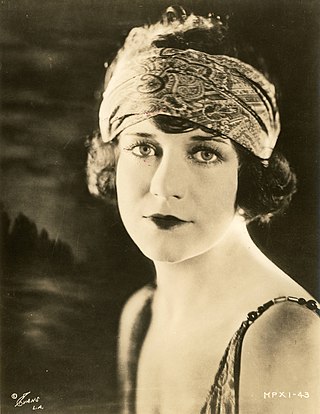
Viola Dana was an American film actress who was successful during the era of silent films. She appeared in over 100 films, but was unable to make the transition to sound films.

Anna Quirentia Nilsson was a Swedish-American actress who achieved success in American silent movies.

Alice Beatrice Calhoun was an American silent film actress.

Florence Vidor was an American silent film actress.

Jane Novak was an American actress of the silent film era.

Barbara Bedford was an American actress who appeared in dozens of silent movies. Her career declined after the introduction of sound, but she continued to appear in small roles until 1945.

The Man From Home is a 1922 British drama film directed by George Fitzmaurice, adapted from a play of the same name by Booth Tarkington and Harry Leon Wilson. The story had been filmed before in 1914 by Cecil B. DeMille as The Man From Home. Alfred Hitchcock was credited as a title designer on the 1922 production. The film survives in Netherlands Filmmuseum Amsterdam. It was shown publicly in September 2015, possibly for the first time since the 1920s, during the British Silent Film Festival at Leicester.

De Sacia Mooers was a film actress, disputably from Los Angeles, California. She appeared in over one hundred movies in the silent film era. She was perhaps best known as the "Blonde Vamp" for her role in The Blonde Vampire in 1922. Her career ended with talking films.

Shirley Mason was an American actress of the silent era.

Miss Nobody is a 1926 American silent drama film produced and distributed by First National Pictures and directed by Lambert Hillyer. The film is based on a short story by Tiffany Wells titled "Shebo"; the likely feminine pronunciation of hobo. The stars of the film were Anna Q. Nilsson and Walter Pidgeon, then in an early role in his career. The plot of this film bears a striking resemblance to Beggars of Life, made two years later at Paramount.
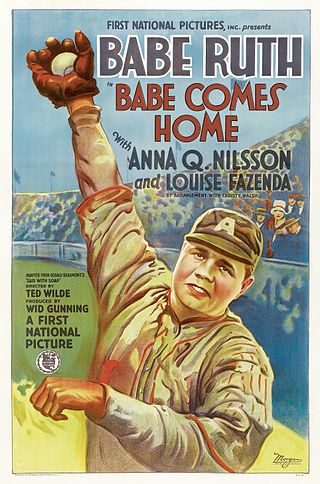
Babe Comes Home is a 1927 American silent sports comedy film produced and distributed through First National and directed by Ted Wilde. The film is a baseball-styled sports film centering on Babe Ruth and Anna Q. Nilsson and was based on the short story "Said With Soap" by Gerald Beaumont.

Inez from Hollywood is a 1924 American silent drama film directed by Alfred E. Green. It was produced by Sam E. Rork with distribution through First National Pictures. The film is based on the short story The Worst Woman in Hollywood by Adela Rogers St. Johns. It stars Anna Q. Nilsson, Lewis Stone, and 18-year-old Mary Astor.
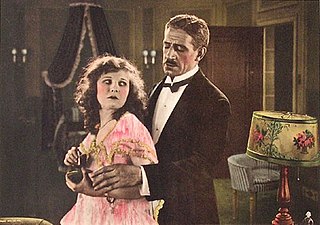
Why Girls Leave Home is a lost 1921 American silent drama film produced by Harry Rapf for Warner Bros. It was the only film from the studio to make a profit in 1921. The poster for the film was featured in the 1962 film Gypsy.
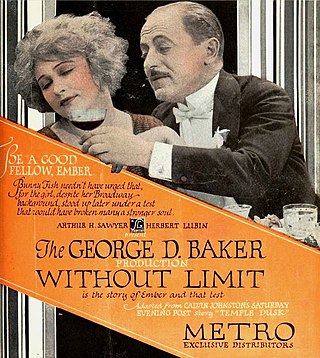
Without Limit is a 1921 American silent drama film produced and distributed by Metro Pictures. It was directed by George D. Baker and stars Anna Q. Nilsson. The film is based on the story The Temple of Dusk by Calvin Johnston that was published in The Saturday Evening Post.
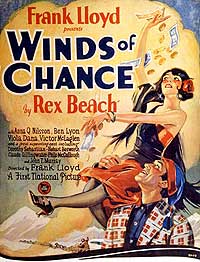
Winds of Chance is a 1925 American silent drama film directed by Frank Lloyd and produced and released by First National Pictures.

The Toll Gate is a 1920 American silent Western film directed by Lambert Hillyer, written by Lambert Hillyer and William S. Hart, and starring William S. Hart, Anna Q. Nilsson, Joseph Singleton, Jack Richardson, and Richard Headrick. It was released on April 15, 1920, by Paramount Pictures.

What Fools Men is a lost 1925 American silent drama film directed by George Archainbaud and starring Lewis Stone, Shirley Mason, and Ethel Grey Terry.

Too Much Money is a 1926 American silent romantic comedy film directed by John Francis Dillon and starring Lewis Stone and Anna Q. Nilsson.
The Man Without a Conscience is a 1925 American silent drama film directed by James Flood and written by Louis D. Lighton and Hope Loring. The film stars Willard Louis, Irene Rich, June Marlowe, John Patrick, Robert Agnew, and Helen Dunbar. The film was released by Warner Bros. on June 7, 1925.
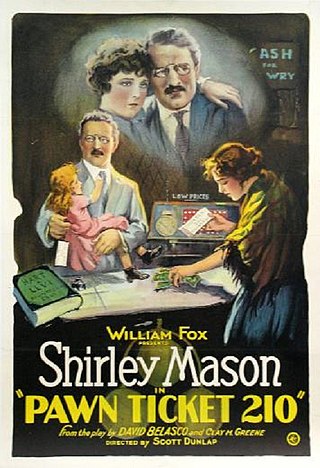
Pawn Ticket 210 is a 1922 American silent drama film directed by Scott R. Dunlap and starring Shirley Mason, Robert Agnew, and Irene Hunt.



















